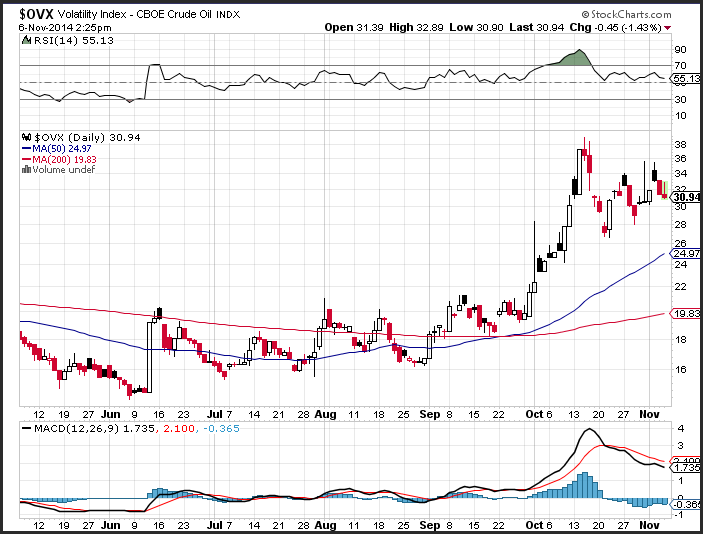Crude Oil Price Volatility Blog Archive
Post on: 16 Март, 2015 No Comment

U.S. Energy: Understanding Crude Oil Price Volatility
AgFax.Com — Your Online Ag News Source
From U.S. Energy Information Administration
Historical volatility measures how much prices have varied in the past, and implied volatility uses options prices to measure how market participants believe prices will vary in the future. In the Brent crude oil market, implied volatility is currently higher than historical volatility because of continuing market uncertainties (Figure 1). Implied volatility is expected to remain high until these uncertainties are resolved.
Historical volatility is calculated from the daily price movements of the front month futures price, typically for a 30-day period. It provides a snapshot of the magnitude of recent up-and-down price movements, but by definition is a backwards-looking metric.
Implied volatility is calculated from the prices of call and put options traded on futures contracts. The Black-Scholes option pricing model is widely used to price crude oil futures options based on a number of factors: the current trading price of the crude oil futures contract; the strike price of the option contract; the time until the option contract expires; and the expected future volatility of the price of the underlying crude oil futures contract. The only one of these variables that is not immediately observable is expected future volatility.
By using the Black-Scholes option pricing model and the known values of the crude oil futures contract, the strike price of the option, the time until the option expires and the current trading price of the option contract, it is possible to calculate the future volatility that is implied by the relationship of the known values, hence implied volatility.
Historical and implied volatility can diverge when expectations about future price movements differ from recently observed price trends. Historical volatility increased in late June and early July reflecting the rapid drop in crude prices before July 1 and the rapid increase after July 1. Since that time, Brent futures prices have traded in a relatively narrow range, because there have been few significant surprises in crude oil markets over the past month, and historical volatility has reverted to its level over the March-through-May period.
Implied volatility did not spike along with historical volatility, implying that market participants did not change their view of longer-term risks, despite the short-term price changes. As the sudden price changes during the middle of the year dropped out of the historical volatility calculation, the two volatility measures returned to their earlier relationship.
Over the last four weeks, economic data, policy actions, and oil market balances have generally been consistent with market expectations. The period began with hopes of stimuli from governments and central banks around the world that improved expectations for economic growth and increased oil prices. More recently, the European Central Bank announced details for a new bond-buying program. In addition, the Chinese government formalized plans for $157 billion in infrastructure-improvement spending, and as many analysts had expected, the U.S. Federal Reserve System announced a new round of treasury bond and mortgage-backed security purchases, otherwise known as quantitative easing, at the conclusion of the September 12-13 meeting of its Federal Open Market Committee.
After moving higher on improved expectations for economic growth through mid-August, crude oil prices settled into a narrow trading range. That trading range has persisted, causing the decline in historical volatility during the second half of August and the first half of September, with historical volatility reaching a 2012 low on September 13.
While historical volatility has declined sharply, implied volatility has fallen only slightly and more gradually on perceptions that geopolitical, technical, and economic risks to future market conditions are largely unchanged. Uncertainty about Irans nuclear ambitions and surprise production outages from outside of the Organization of the Petroleum Exporting Countries (OPEC) are sources of potential upside price risk. A slowdown in Chinas economic growth and fears over the stability of the euro, even with the recent government and central bank interventions, pose potential downside risks to future crude oil prices.
As a result, the markets expectation about future crude oil price volatility has remained relatively high despite the recent downward trend in historical volatility.














